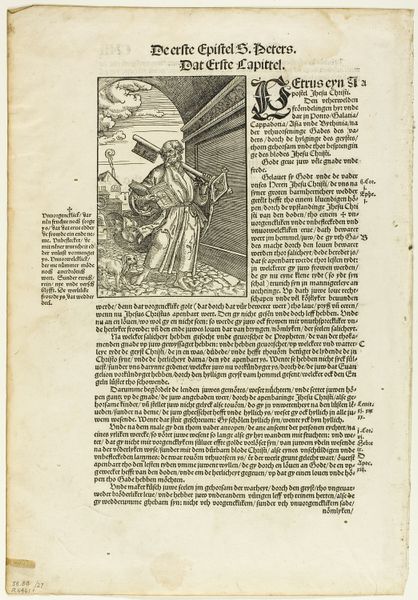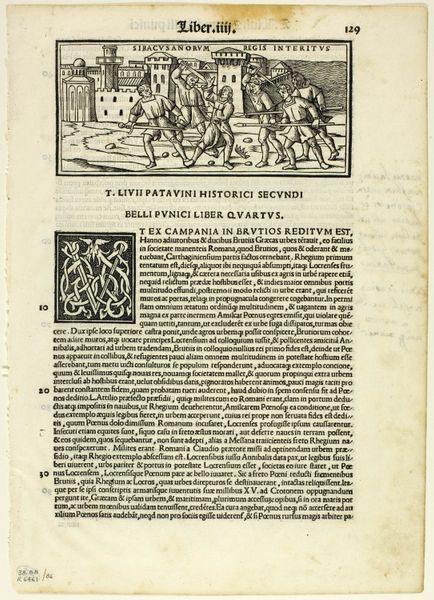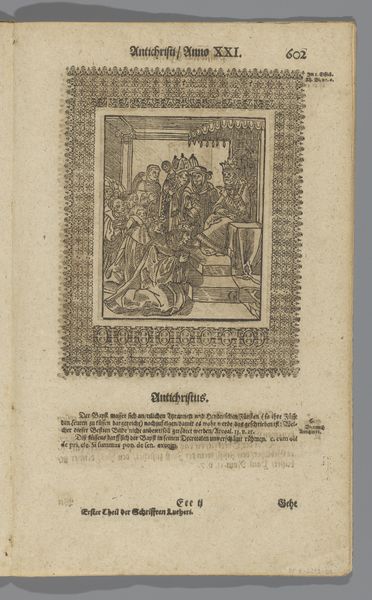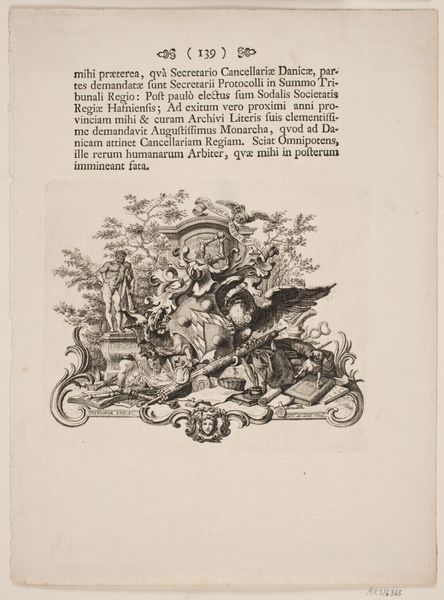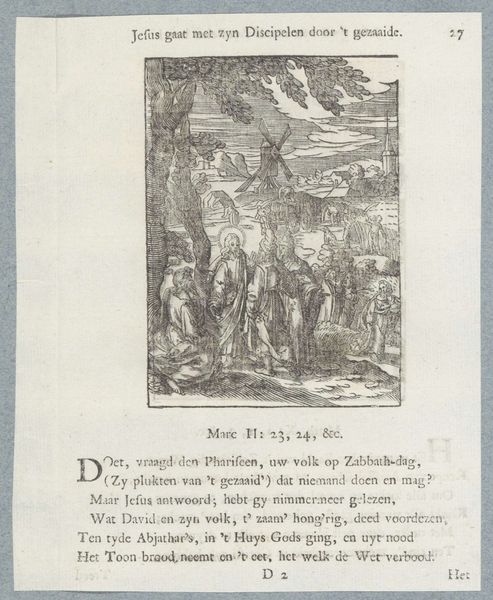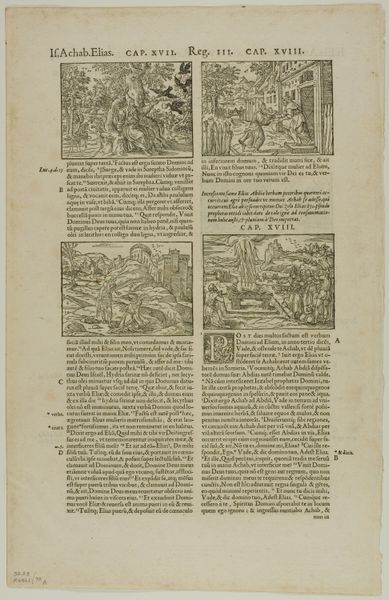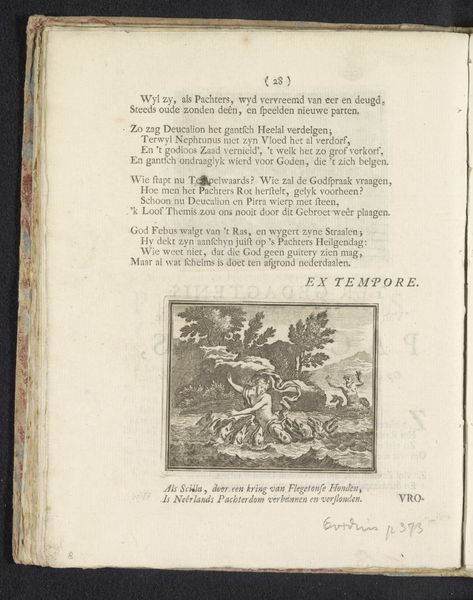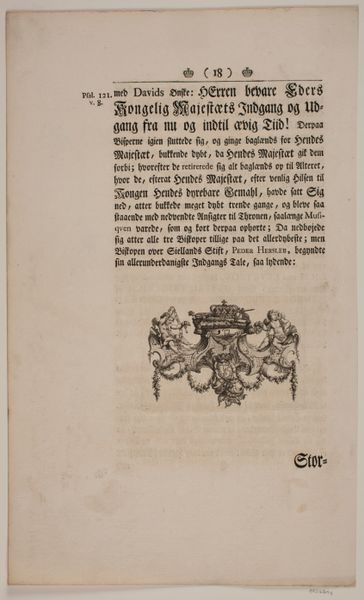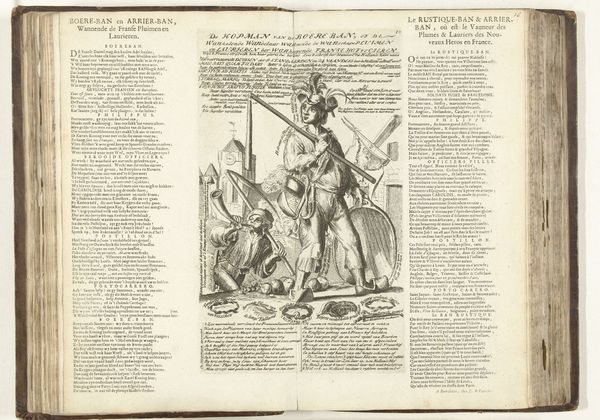
drawing, print, paper, ink, engraving
#
drawing
# print
#
paper
#
ink
#
engraving
Dimensions: 103 mm (height) x 130 mm (width) (plademaal)
Curator: We’re looking at “Vignet til Frederik d. IV’s salvingsakt,” which roughly translates to “Vignette for Frederik IV’s Act of Consecration.” It’s an engraving printed with ink on paper, created in 1749 by Odvardt Helmoldt de Lode. It's part of the collection at the SMK, Statens Museum for Kunst. What's your immediate take? Editor: It feels very formal, like a declaration. The etching has a beautiful delicacy, even a sort of fragile power. But what strikes me most is how cluttered it is, a riot of heraldic imagery surrounding a long text passage. Curator: You've nailed it. It’s essentially an official document, yet rendered with this artistic touch. Look at the crown resting atop the shield: it's so detailed you can almost feel the weight of responsibility. The text above provides some narrative context for an official ceremony, the coronation, invoking solemnity through description. Editor: The shield itself is a complex collection of symbols! Are those figures beside it meant to be allegorical? Curator: Precisely! The figures represent strength and wisdom, essential qualities expected of a king. Their postures seem supportive, as if they're upholding the weight of the monarchy itself. And there are discarded items beneath that seem to imply what’s necessary to remove for the king to truly thrive. Editor: The composition almost feels like a stage setting, with all these symbols placed just so to convey maximum impact. The vignette becomes a tiny theater of power. And what about the fact that it’s black and white? Curator: The lack of color reinforces the severity, focusing the viewer on the detail of the lines. But also on what that power is, it is simply rendered, it’s something almost anybody can recreate and participate in its symbolism, not so much set above people. Editor: Looking at the lower text "Stor" stylized into what seems like the branches of a large tree roots us in this idea that power needs a root to be legitimized, to take hold in something bigger and ancient. This engraving speaks to the human need for ritual and validation in even the most official endeavors. Curator: Absolutely, that it does so in a work of printed paper meant it could reach more of society, more of society could imagine and recreate it, but only once consecrated under a legitimate symbol. It all layers into an elaborate performance of royal authority. Editor: Indeed! And thinking about the blend of text and image reminds us how entwined visual and written language are when shaping and reinforcing cultural narratives. Thank you for clarifying some of those hidden symbolic meanings! Curator: Likewise! Always insightful to consider how visual vocabularies shape our understanding of history and its representations.
Comments
No comments
Be the first to comment and join the conversation on the ultimate creative platform.

